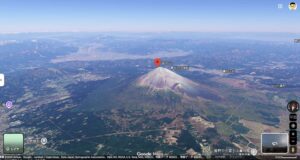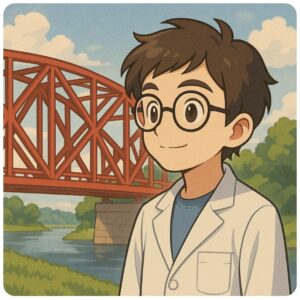The Magic Mirror Trick: How a Half-Eaten Cake Comes Back! A Fun Card Mirror Experiment for Students
Here is the translated blog post, crafted to be natural, engaging, and easy for a native English-speaking general audience to read!
Hello! I’m Ken Kuwako, your Science Trainer, and for me, every day is an experiment!
You stand in front of a mirror and see “another you.” While it’s an everyday sight, the world inside a mirror is actually quite mysterious. Now, what if you had not one, but two mirrors? What kind of scene would unfold between them?
If you’re thinking, “That sounds complicated,” don’t worry! This time, we’re introducing a magical science experiment that creates a stunning, surprising world of beauty using simple items from the dollar store. Get ready to experience a light illusion that will make everyone, from kids to adults, gasp in amazement!
A Whole Cake Appears with Just Two Mirrors?!
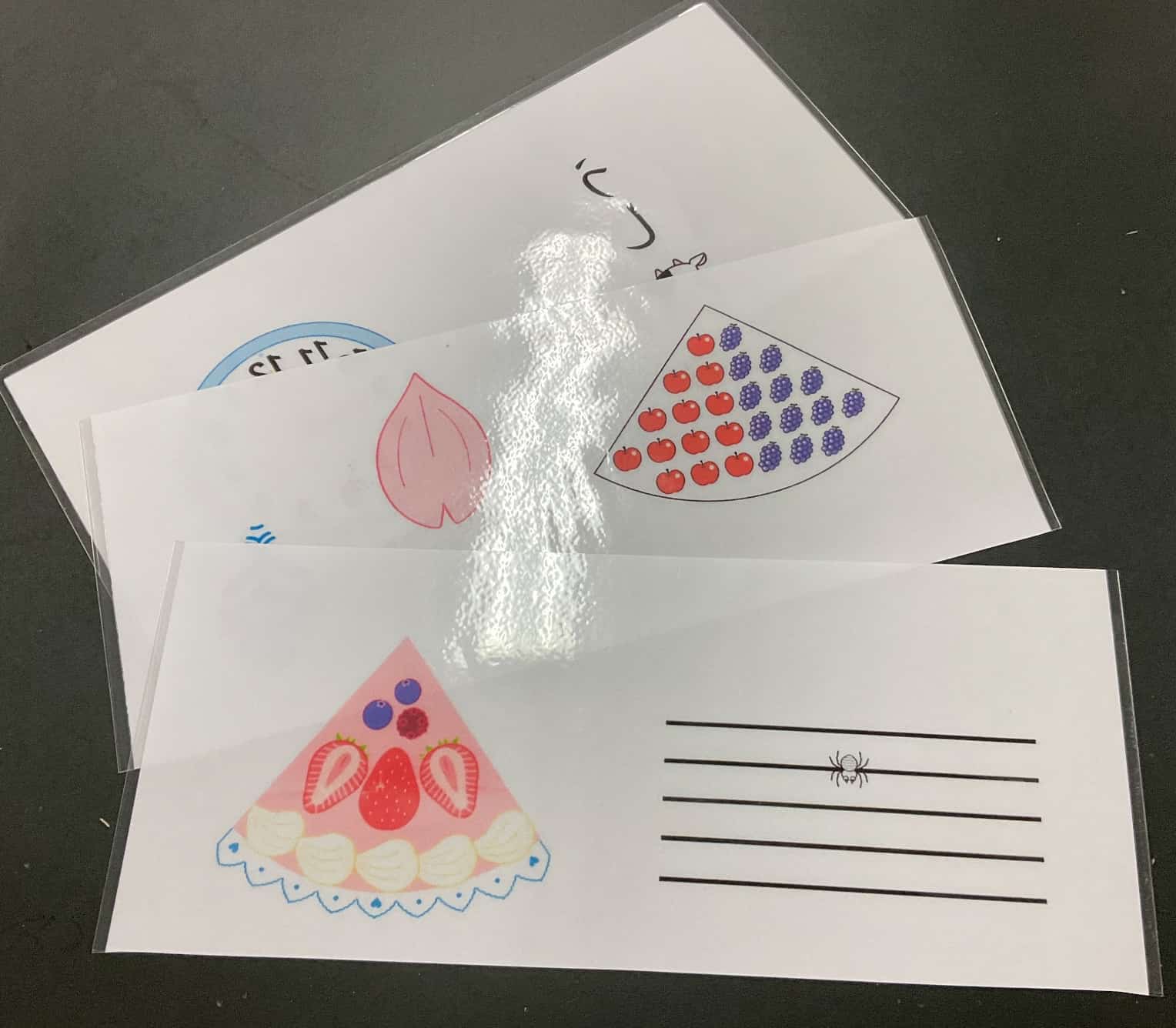
When teaching the unit on mirrors in a science class, just explaining the path of light and how images are formed using words and diagrams often fails to capture the real excitement. I always look for that moment when a student’s “Huh?” face turns into an “Aha!” moment. That quest is what led me to this experiment.
The star of the show is an illustration of a cake cut into one-quarter slices. Place this illustration between two mirrors, and voilà! A single, complete whole cake appears as if by magic! Through this amazing phenomenon, you can have fun learning the secrets of images created by mirrors and the beauty of symmetry.
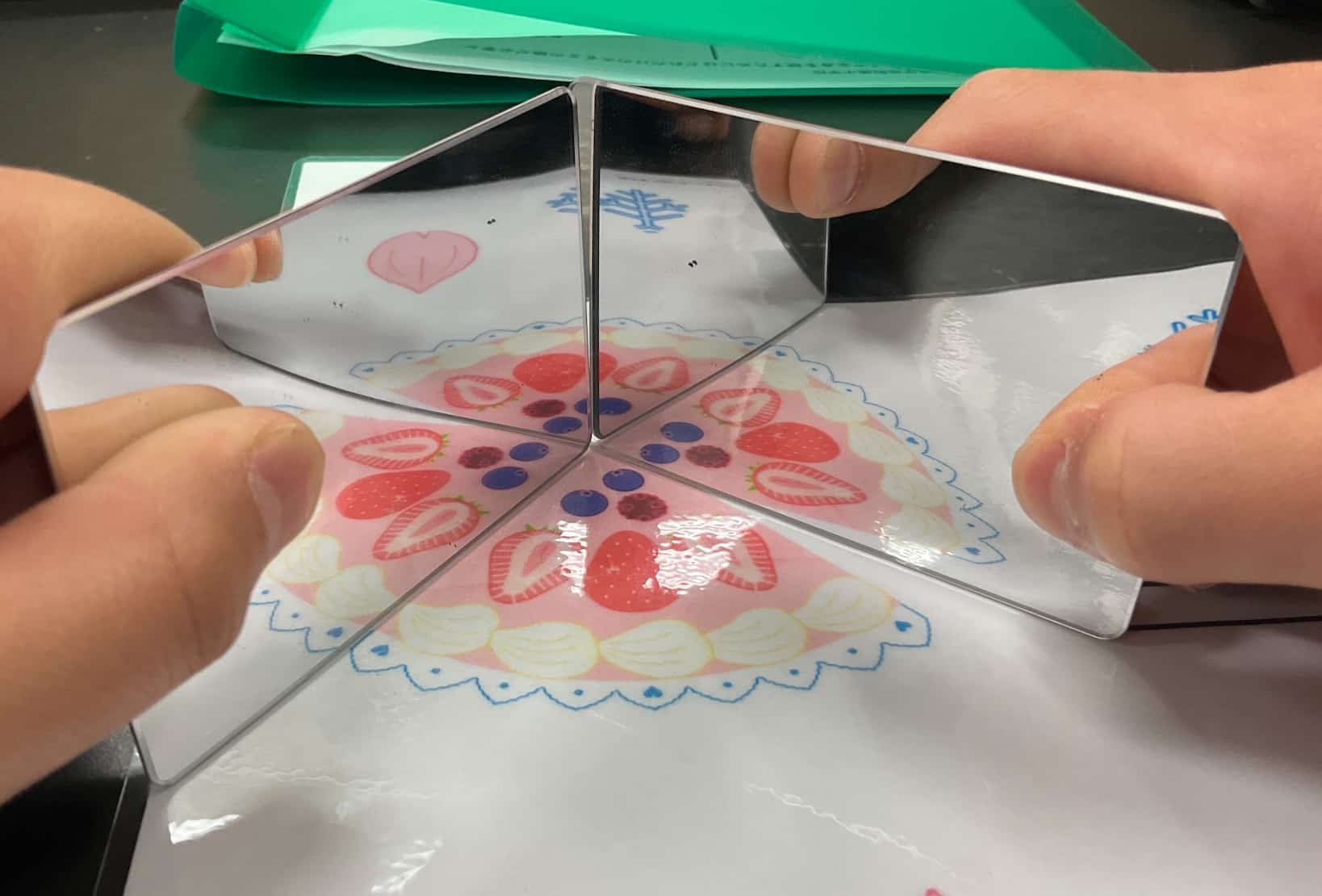
Experiment Prep and Procedure
【What You’ll Need】
- Card-Sized Mirrors: 2 (Easily found at a dollar store. Their affordability is perfect for giving one to each student!)
- Experiment Illustration Sheet (Symmetrical shapes work best, like a quarter-cut cake or a star shape.)
- Cardboard or Tape (Handy for making the mirrors stand up easily.)
【Procedure】
- Print out the one-quarter cake illustration and place it on a desk.
- Use the two card mirrors and stand them up at a 90° angle, aligning them with the corner of the illustration.
- Gently peek into the space between the two mirrors. …What do you see? The images of the cake should reflect in the mirrors, revealing a gorgeous whole cake!
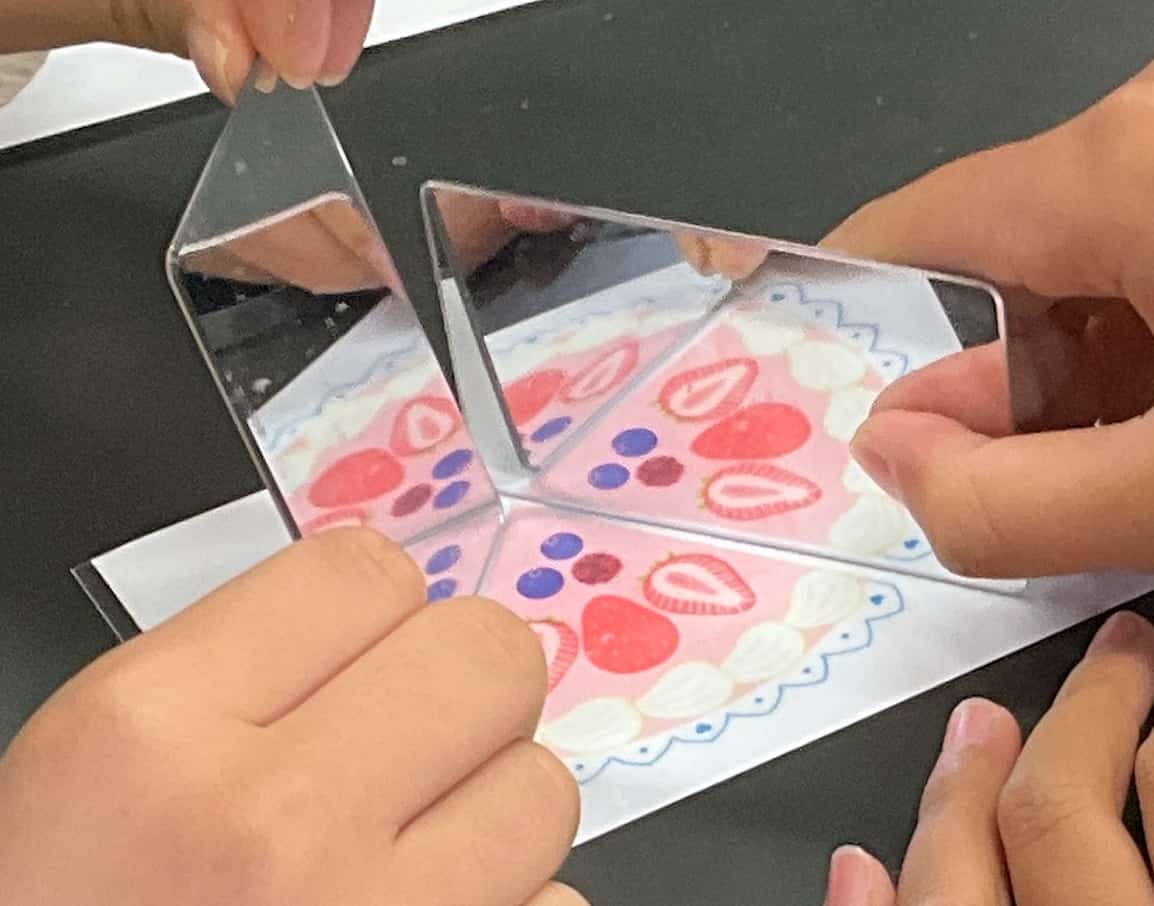
- Next, try slowly decreasing the angle between the mirrors. As you change it to 60∘, then 45∘, you’ll observe the number of visible cakes (images) increasing! It’s just like looking into a kaleidoscope!
The Scientific Secret Behind the Mirrors’ Infinite World
This incredible phenomenon is caused by the reflection of light. The image of the cake reflected in one mirror is then reflected in the second mirror, and that image is reflected again in the first one, and so on. The light repeatedly reflects, creating numerous images (called virtual images). This setup is known as a “double mirror” or “multiple reflection” setup.
So, why does the number of images change with the angle? A fascinating rule is at play here.
- The Image Count Secret: The total number of items visible (the actual object plus all its images) can be calculated with a simple formula: 360÷angle between the mirrors. For instance, at 90∘, the calculation is 360÷90=4. Since the actual object is one, you see three images, totaling four pieces that form the whole cake. At 60∘, you’ll see a total of 6 cakes, and at 45∘, a total of 8 cakes. Be sure to try it out in your experiment!
- Discovering Symmetry: This experiment is also a perfect bridge to learning about symmetry, a concept vital in both math and art. The reason the cake or star shape looks so beautiful is because they are symmetrical figures. Look to the natural world—many beautiful things, like butterfly wings and snowflakes, possess symmetry. This experiment not only gives you a scientific perspective but also helps you notice the “mechanics of beauty” in the world around you.
The Double Mirror World Hidden in Everyday Life
The technology behind this “double mirror” effect is at work all around us.
For example, exhibits at science museums, like the one pictured below, use two large mirrors to create a mysterious experience where space appears to stretch out into infinity.
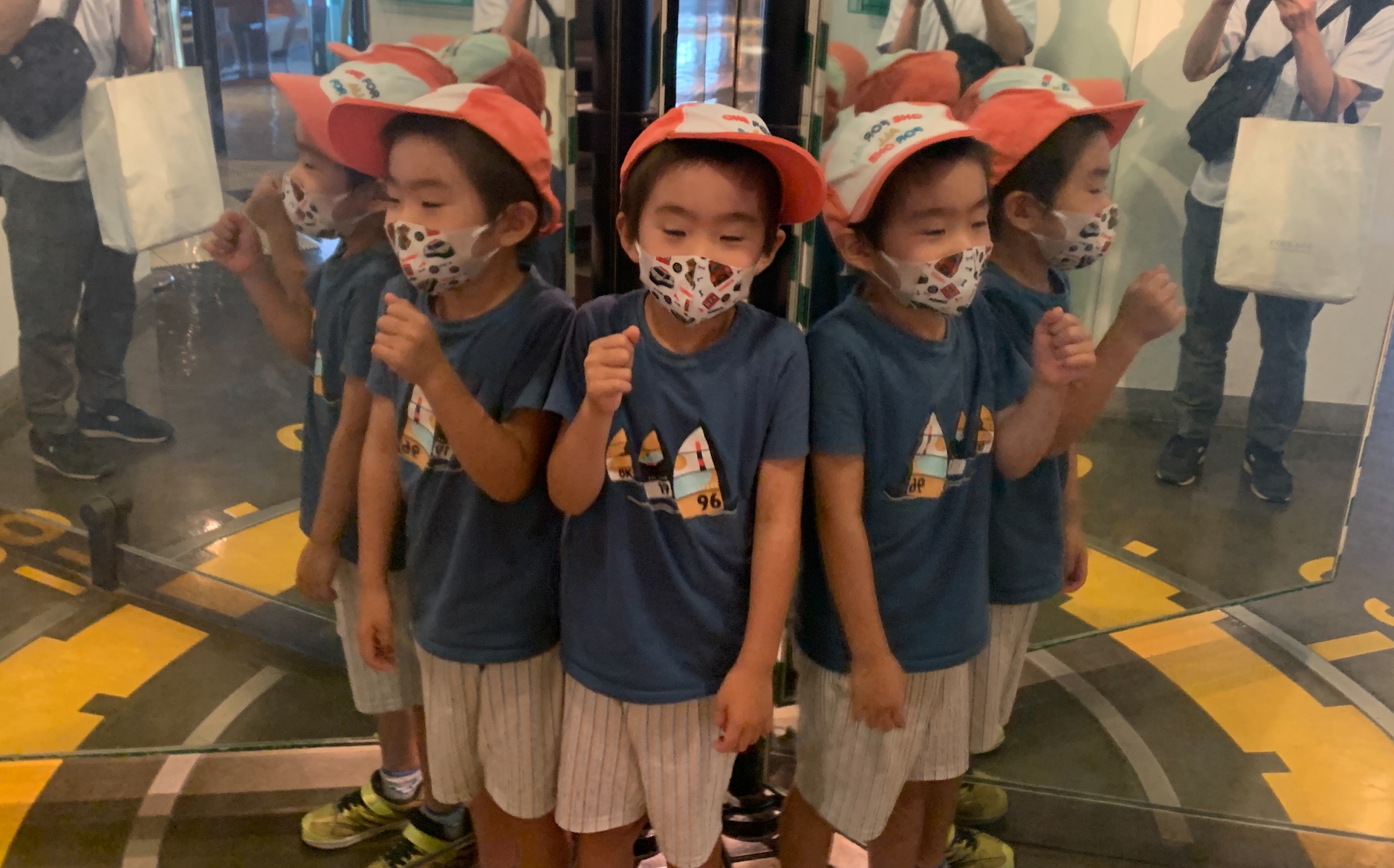
Also, the artist Yayoi Kusama’s work, “Infinity Mirror Room,” transforms a room into an endless space by covering the walls in mirrors. Even the hand mirror you use in the hair salon to check the back of your head is a form of a double mirror setup!
This simple experiment, starting with just one illustration and two mirrors, opens up the world of learning from the properties of light to mathematical rules, art, and the science in our daily lives. Best of all, the visual impact that makes everyone exclaim, “Wow, that’s cool!” makes it the perfect gateway to experiencing the fun of science.
Go ahead and try this little light magic at home or in the classroom!
Contact and Collaboration
Want to make the wonders and fun of science more accessible? I’ve compiled easy-to-understand tips and fun science experiments you can do at home. Feel free to search around!
・Learn more about the operator, Ken Kuwako: Here
・For all inquiries (writing, lectures, workshops, TV consulting/appearances, etc.): Here
・Updates on new articles are posted on X!
![]() We post experiment videos on the Science Channel!
We post experiment videos on the Science Channel!

